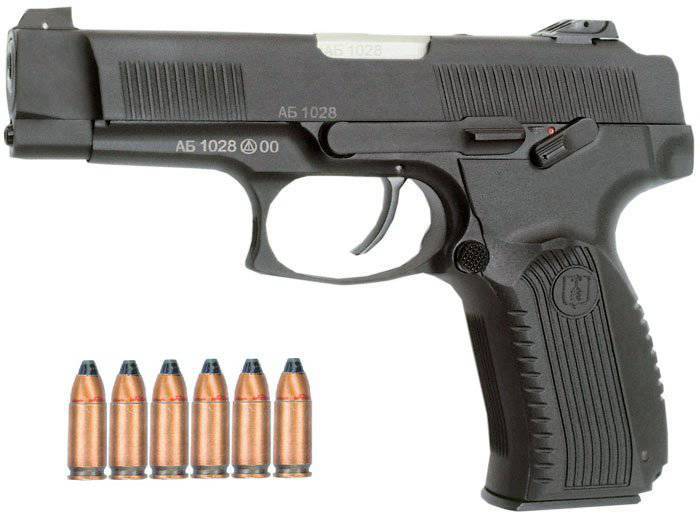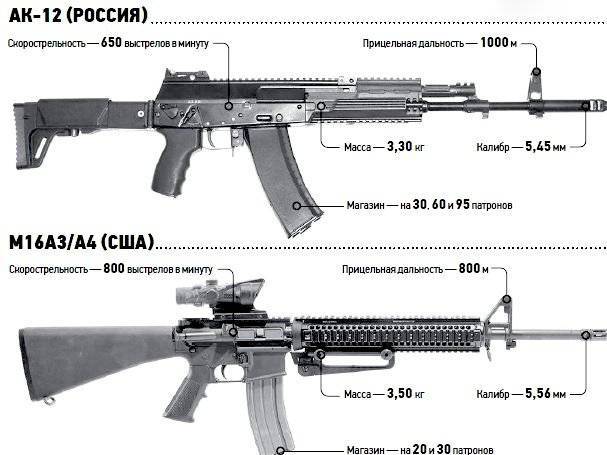What determines the effectiveness of automatic weapon fire?

Earlier, in the article “On some of the“ flaws ”of the Yarygin pistol and their causes,” Director of Poligon LLC Alexander Petrov touched upon the topic of evaluating individual samples of small arms weapons. In it, he spoke about how an unprofessional approach and unjustified conclusions made on this basis, without fully taking into account all the features, could have a negative impact on the subsequent “fate” of a particular type of weapon.
Continues the topic touched upon, article A.A. Catch, in which the author expresses his opinion on the high rate of fire and low accuracy of automatic weapons, as well as a comparative evaluation of automatic and manual weapons.
The use of firearms without reloading by the shooter - due to the excess energy of the propellant powder gases - led to the creation of a class of automatic weapons. Having a huge advantage over manual firing, automatic weapons simplified shooting techniques, reduced shooter fatigue and, ultimately, led to a change in the tactics of using small arms.
However, automatic weapons are inferior to non-automatic in such an important indicator as the accuracy of firing bursts. The reason for its decrease is the high frequency (10 and more than once per second) of the strikes of the moving parts of the automation at the end points of their movement, which leads to a violation of the stability of the weapon and a significant increase in the dispersion of bullets when firing in bursts.
How do the high rate of fire of automatic weapons and the reduced accuracy of fire in bursts combine? Is it possible to evaluate automatic weapons by the accuracy of a battle, recognizing the best sample, which has a higher accuracy?
Answers to such questions can be given only by considering the peculiarities of using weapons in various conditions, and the values in them of accuracy of fire by bursts. Thus, according to the official shooting tables of small arms (TS “61 GRAU, ed. 1979 g.), The probable deflection of bullets due to dispersion in height and lateral direction (BB Sum) and the total dispersion of bullets when firing bursts (WB Sum) The prone position with the emphasis from the AKM submachine gun is averaged by the skill of the arrows, in comparison with a single fire, by 8-9 times.
And from unstable positions for firing (from a knee, standing) total dispersion in comparison with shooting from an emphasis increases even in 2-3 times. Approximately, the same increase in dispersion is observed when firing bursts of other types of automatic weapons. However, an increase in dispersion does not necessarily imply a reduction in the effectiveness of automatic weapon fire.
Shooting bursts forms a sheaf of bullets, giving hits on a larger area than with high accuracy. High accuracy of shooting reduces the area of dispersion of bullets, and this, if the sheaf axis of the trajectories does not match with the target, reduces the probability of hitting the target. In most cases, the preparation of initial installations for firing is accompanied by errors that lead to the deviation of the average trajectory of fire from the target. And, if the magnitude of this deviation does not exceed the size of the area of dispersion of bullets, then the probability of hitting the target is preserved.
Consequently, an increase in dispersion during firing does not always lead to a decrease in the effectiveness of the fire. It is especially important to understand and take this into account when using automatic weapons so that their rate of fire compensates for the decrease in accuracy of fire by bursts.
Currently, the effectiveness of fire is estimated by the number of targets hit, the level of destruction of which is determined by the fire mission. It has been established that when firing an enemy at destruction for a considerable time, at least 80% of individual targets should be disabled, suppression — about 50% of targets should be temporarily prevented from conducting active response actions and with disturbing fire — 30 disabled % of targets, difficult engineering and maneuvering, as well as weakened fire.
The tasks of the specified levels of hitting targets in all cases are solved by automatic weapon fire in a shorter time due to its rate of fire, which is an indisputable advantage over non-automatic weapons. At the same time, the accuracy of fire of a separate fire weapon does not play a decisive role - the density of fire (the number of bullets per one meter), which is exactly the automatic weapon, is more important.
The required level of damage to the enemy is determined by the combat mission and the capabilities of the unit in terms of time, ammunition consumption and other specific conditions. The fire to destroy is most successful when it is suddenly opened from ambushes at effective fire ranges, from stable positions for firing, with a sufficient number of cartridges and at night using tracer bullets. Fire on the suppression is advisable with a limited supply of ammunition, in conditions unfavorable for observation and on moving targets. Harassing fire is conducted to limit the actions of the enemy, when it is not possible to cause him more significant damage.
In all the above options, the fire of an automatic weapon does not require high accuracy of a separate fire weapon - its effectiveness, as already noted, is ensured by a high rate of fire and density of fire. When it is suddenly opened, in addition to material losses, a strong moral impact on the power of automatic fire turns on the enemy.
For automatic weapons, the most important requirement is not high accuracy of firing in bursts, but high reliability of operation in the most diverse conditions. From the very first years of the use of heavy machine guns at the end of the 19 century, the reliability of their operation became the main requirement for them, while accuracy of fire was not considered the most important feature of automatic weapons.
Moreover, in the design of machine guns, there were mechanisms for artificially increasing the dispersion of bullets when firing at wide and deep targets. In the modern rules for shooting small arms there are also recommendations on the use of fire with artificially increased dispersion. Increasing dispersal within certain limits can increase the effectiveness of automatic weapons.
Therefore, in the requirements for weapons should not set the minimum dispersion when fire bursts (required maximum value of accuracy), and the required accuracy for this type of weapon, corresponding to the combination of the most favorable conditions for the use of automatic weapons.
The optimum accuracy rate can be determined from an analysis of the probabilities of hitting targets in various instances of using automatic weapons, taking into account the accuracy of methods for preparing source data for shooting, the size and importance of the target, and other factors affecting the shooting results.
When determining the optimal accuracy, it is necessary to take into account the nonuniformity of dispersion of bullets, which creates a different density of impact depending on the distance of their flight path from the axis of the sheaf of dispersion. In the design of an automatic weapon, it is possible to provide a special device for changing (increasing or decreasing) dispersion, so that the shooter has the opportunity to use fire with optimum dispersion in accordance with a specific fire mission.
A similar purpose mechanism is used in the machine-gun DS-39 of the system V.A. Degtyarev to switch the rate of fire on air targets, which also leads to an increase in the dispersion of bullets.
Thus, the low accuracy of firing bursts of automatic weapons, as compared with a single fire, is not a disadvantage, since it is compensated for by an increase in the area of dispersion of bullets and their density near the axis of the trajectory sheaf. The basis for the overall assessment of automatic weapons is the reliability of their actions, as evidenced by international practice.

It is known that the Kalashnikov assault rifle is inferior in accuracy of fire by bursts of automatic rifles in the USA of the M16 family, but surpasses them in terms of reliability in dust and pollution. This led to the spread of AK and its modifications in more than 50 countries of the world. A similar picture is observed with the use of the Dragunov self-loading sniper rifle of the SVD design.
Yielding to the accuracy of the battle with some modern sniper rifles of foreign manufacture, she is recognized by experts as the best army sniper rifle for virtually flawless action. The evaluation of the AN-94 of the Nikonov system, based on the high accuracy of fire with twin shots, led to its erroneous adoption by the army. However, AN-94 is not able to replace the Kalashnikov assault rifle due to insufficient reliability.
At the same time, the adoption of the reliability of its action as the main assessment of an automatic weapon does not exclude accuracy of fire, which largely determines the weapon’s fire capabilities, as an important characteristic.
First of all, it concerns a weapon that allows the conduct of a single fire. A single fire when firing from stable positions, in good conditions for observing the battlefield, with a more reliable determination of the initial settings for opening fire and good skills of the shooters ensures that the target is hit with a lower expenditure of ammunition. It should be noted that in many similar conditions, the desired result of hitting the target is achieved by firing bursts with a lower expenditure of ammunition with high accuracy of the weapon.
With this in mind, automatic weapons should be evaluated, first of all, not by the accuracy of the battle, but by the reliability of its mechanisms. The reliability of the mechanisms has always been and remains the basis for the evaluation of weapons.
Therefore, for automatic weapons, it is not the accuracy of fire with minimum dispersion that is important, but the optimum accuracy of bullet dispersion when firing to ensure the fulfillment of the intended fire mission. And the most important property of any firearm weapons has always been and remains its reliability in various conditions of its use.

Information